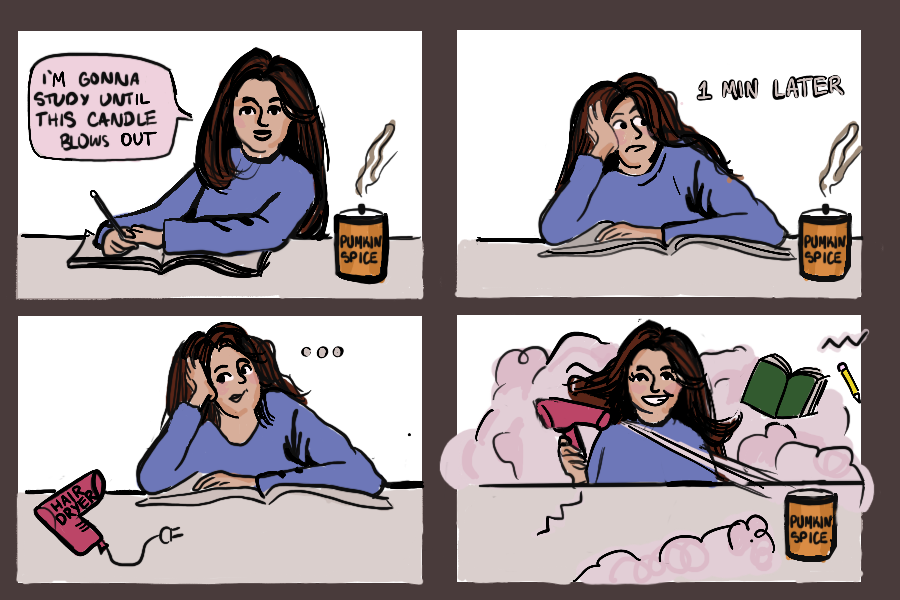Go on Pinterest. Type “thinspiration” into the search bar. Notice the disclaimer above the pins: “Eating disorders are not lifestyle choices, they are mental disorders that if left untreated can cause serious health problems or could even be life-threatening. For treatment referrals, information, and support, you can always contact the National Eating Disorders Association Helpline at 1-800-931-2237 or www.nationaleatingdisorders.org.”
But if one casually browses the website without specifically searching the word “thinspiration,” this disclaimer is nowhere to be found. Images of ghoulishly thin women are in plain view — and there’s an abundance of them.
Thinspiration is a trend in which individuals post and share images of supermodels or “real girls” with very thin bodies. Often times these photos are accompanied by quotes promoting restrictive eating behaviors such as, “You can’t lose weight by talking about it.” While simply looking at images will not create an eating disorder, Rachel Storm, assistant director of the Women’s Resources Center, sees quite a few problems associated with this growing trend.
“The problem is that it feeds into this beauty myth idea that I think is really detrimental to the lives of young girls and women. The myth being that health can be reduced to, weight can be reduced to, size can be reduced to a number,” Storm said. “We can’t say that we look at a person who is thin and that inspires us to be healthy. No, that inspires us to be thin.”
Storm co-facilitates the Body Image Action Coalition, a group that discusses the many myths perceived about body weight, as well as the impact the media has on body image and how race and gender play a role.
Get The Daily Illini in your inbox!
“It’s not actually accurate to say that there is a magic number or a magic weight that everyone should have,” Storm said. “Those things are dangerous, and I think that thinspiration inspires that sort of thinking.”
That sort of thinking is the kind that Melanie Marklein, clinical counselor at the counseling center and co-facilitator of the Body Image Action Coalition, can see on a day-to-day basis. According to the Renfrew Center Foundation for Eating Disorders, 25 percent of college-aged women engage in binging and purging as weight-management techniques. Of the women that develop anorexia, 20 percent will prematurely die from complications related to their eating disorder, including suicide and heart problems.
Many of the students that Marklein works with use online sites as a source of inspiration for their eating disorders. With the advent of social media, an individual with an eating disorder can turn to an entire community of people online for support. However, it’s often not the right kind of support.
“When they turn to thinspiration sites, it can reduce the dissonance that they’re feeling and help them stay in a state of denial about the severity of their behaviors,” Marklein said. “It helps them feel that what they’re doing is OK.”
Marklein acknowledges that certain individuals are more at risk than others to the effects of browsing “thinspo” sites. Yet, for the people who are already vulnerable, the trend only further internalizes unrealistic goals toward a perceived notion of beauty. Both Marklein and Storm advised that individuals who engage in thinspiration should question the motivation behind it and the impact it has on their lives.
Though Chelsea Carlovsky, freshman in FAA, does not follow the trend, she sees how easy it could be to turn to thinspiration websites.
“You go out to the bars and you see a huge array of people … there’s girls in skimpy clothing and they’re rail-thin. Coming here and being exposed to all sorts of people, you might think ‘Oh my god, I want to be like them,’” she said. “I’m confident with myself so it doesn’t really affect me. But for someone who is more self-conscious with themselves, it could be more of an issue.”
As an Illinette, Carlovsky notices girls obsess over their bodies constantly. One girl on her team practices unhealthy eating behaviors, such as refusing to eat whenever the team goes out to dinner. Carlovsky often hears other teammates discuss this girl’s body, yet they aren’t aware of the eating habits she engages in.
“All the girls that don’t really know about it, they’ll constantly compare everyone else to her and say she’s so skinny and perfect,” she said. “But they just don’t realize it’s impossible for everyone to get like that.”
As part of an initiative to advocate for positive thinking about body image, Storm and Marklein encourage students to participate in National Eating Disorders Awareness Week. From Feb. 24 to March 2, multiple groups on campus will offer programs on healthy eating, relaxation and loving one’s body. Leading up to the week, Dr. Anita Johnston, author of “Eating in the Light of the Moon,” will speak on “Deciphering the Hunger Code: Understanding Food Struggles through Myth, Metaphor, and Storytelling.” The event will take place at Lincoln Hall Theater on Feb. 22 at 6 p.m.
While Pinterest and Tumblr placed stricter restrictions on their sites from sharing thinspiration last year, a simple search proves the images are still quite accessible. For those wishing to stop the unhealthy cycle of idolizing unrealistic photos, Marklein recommends students to seek support outside of the virtual world.
By not looking at the thinspiration sites, Carlovsky can place more emphasis on aspects of her life that don’t surround her weight and avoid falling into the trap that many dancers often do.
“There’s always going to be someone else who’s prettier and skinnier than you. That’s just a fact of life,” she said. “But if you spend your entire life thinking about all the negative things about you, you’re never going to get anywhere in life.”
Alice can be reached at [email protected].





